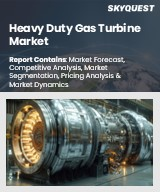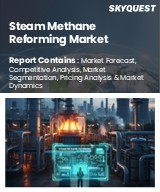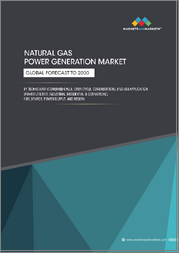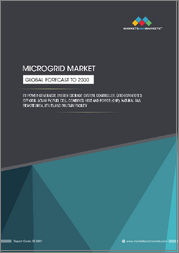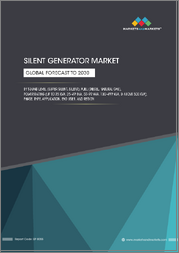
|
시장보고서
상품코드
1636333
세계의 비전통 가스 시장 : 유형별, 용도별, 지역별(2025-2033년)Unconventional Gas Market by Type (Shale Gas, Tight Gas, Coal Bed Methane (CBM), and Others), Application (Industrial, Power Generation, Residential, Commercial, Transportation), and Region 2025-2033 |
||||||
IMARC Group은 2024년 비전통 가스 시장 세계 시장 규모가 2,175억 달러에 달했으며, 2025-2033년간 6.3%의 연평균 성장률(CAGR)을 기록하여 2033년에는 3,878억 달러에 이를 것으로 예측했습니다. 세계 에너지 수요를 충족시키기 위한 발전 수요 증가, 화석 연료의 급속한 고갈, 다양한 시추 기술의 지속적인 기술 발전이 시장을 주도하는 주요 요인 중 일부입니다.
비전통 가스는 청정 에너지원으로 기존 저류층 가스에 비해 상당한 양의 투과성과 다공성을 가진 셰일암, 석탄층, 저투수성 암석에서 얻을 수 있습니다. 비전통 가스의 구성은 천연가스 액체, 저농도 또는 고농도 이산화탄소, 고농도 또는 저농도 유황을 포함할 수 있습니다. 수평 우물을 시추하여 고압의 물, 모래, 화학물질을 사용하여 암석을 파쇄하고 탄화수소를 추출할 수 있습니다. 또는 고압의 액체를 암반에 주입하여 균열을 내는 수압파쇄법을 통해 비전통 가스를 얻을 수도 있습니다. 일반적으로 비전통 가스의 채굴에는 수평 시추와 수압파쇄가 주로 사용됩니다. 비전통 가스는 청정 연소 특성으로 인해 발전용, 가정용 에너지원으로, 상업용으로는 급탕, 난방, 냉방용으로 활용되고 있습니다.
비전통 가스 시장 동향 :
전 세계적으로 증가하는 에너지 수요에 대응하기 위한 발전 수요 증가는 시장 성장을 가속하는 중요한 요인입니다. 그 배경에는 화석연료의 급속한 고갈과 가격 상승이 있습니다. 이에 따라 석유 및 가스 탐사 활동의 대폭적인 증가가 시장에 활력을 불어넣고 있습니다. 또한, 지속 가능한 시장 개발에 대한 관심이 높아짐에 따라 많은 최종 사용 분야에서 비전통 가스의 사용이 증가하면서 시장에 유리한 성장 기회를 창출하고 있습니다. 이와 더불어, 다양한 시추 기술의 지속적인 기술 발전은 시장의 중요한 성장 촉진요인으로 작용하고 있습니다. 또한, 전 세계적으로 새로운 천연가스 매장량 발견이 증가하고 있는 것도 시장에 긍정적인 영향을 미치고 있습니다. 또한, 다수의 비전통 가스 탐사 프로젝트에서 주요 기업 간 제휴, 인수합병(M&A) 및 파트너십이 증가하면서 시장 성장에 힘을 실어주고 있습니다. 이와 더불어, 화석 연료의 대안으로 비전통 가스의 사용을 촉진하기 위해 여러 국가의 정부 기관에서 시행한 유리한 이니셔티브는 긍정적인 시장 전망을 창출하고 있습니다. 시장 성장의 다른 요인으로는 환경 문제 증가, 비전통 가스 제조업체 간의 치열한 경쟁, 청정 에너지의 이점에 대한 인식 증가, 광범위한 조사 및 개발 활동 등이 있습니다.
본 보고서에서 다룬 주요 질문
- 세계 비전통 가스 시장은 지금까지 어떻게 발전해왔고, 앞으로 어떻게 발전할 것인가?
- 비전통 가스 시장 세계 시장에서의 촉진요인, 억제요인 및 기회는 무엇인가?
- 주요 지역 시장은?
- 비전통 가스 시장이 가장 매력적인 국가는 어디일까?
- 유형별 시장 분석은?
- 용도별 시장 현황은?
- 세계 비전통 가스 시장 경쟁 구도는?
- 세계 비전통 가스 시장의 주요 기업은?
목차
제1장 서문
제2장 조사 범위와 조사 방법
- 조사 목적
- 이해관계자
- 데이터 소스
- 1차 정보
- 2차 정보
- 시장 추정
- 보텀업 접근
- 톱다운 접근
- 조사 방법
제3장 주요 요약
제4장 서론
- 개요
- 주요 업계 동향
제5장 세계의 비전통 가스 시장
- 시장 개요
- 시장 실적
- COVID-19의 영향
- 시장 예측
제6장 시장 분석 : 유형별
- 셰일 가스
- 시장 동향
- 시장 예측
- 타이트 가스
- 시장 동향
- 시장 예측
- 석탄층 메탄(CBM)
- 시장 동향
- 시장 예측
- 기타
- 시장 동향
- 시장 예측
제7장 시장 분석 : 용도별
- 산업
- 시장 동향
- 시장 예측
- 발전
- 시장 동향
- 시장 예측
- 주택
- 시장 동향
- 시장 예측
- 상업
- 시장 동향
- 시장 예측
- 운송
- 시장 동향
- 시장 예측
제8장 시장 분석 : 지역별
- 북미
- 미국
- 캐나다
- 아시아태평양
- 중국
- 일본
- 인도
- 한국
- 호주
- 인도네시아
- 기타
- 유럽
- 독일
- 프랑스
- 영국
- 이탈리아
- 스페인
- 러시아
- 기타
- 라틴아메리카
- 브라질
- 멕시코
- 기타
- 중동 및 아프리카
제9장 성장 촉진요인 및 억제요인과 기회
- 개요
- 성장 촉진요인
- 성장 억제요인
- 기회
제10장 밸류체인 분석
제11장 Porter의 Five Forces 분석
- 개요
- 바이어의 교섭력
- 공급 기업의 교섭력
- 경쟁 정도
- 신규 진출업체의 위협
- 대체품의 위협
제12장 가격 분석
제13장 경쟁 구도
- 시장 구조
- 주요 기업
- 주요 기업 개요
- Chevron Corporation
- Emerson Electric Co.
- Equinor ASA
- ExxonMobil Corporation
- Oil and Natural Gas Corporation Limited
- Schlumberger Limited
- Shell plc
The global unconventional gas market size reached USD 217.5 Billion in 2024. Looking forward, IMARC Group expects the market to reach USD 387.8 Billion by 2033, exhibiting a growth rate (CAGR) of 6.3% during 2025-2033. The escalating demand for higher power generation to cater to the global energy demand, rapid depletion of fossil fuels, and continual technological advancements in various drilling techniques represent some of the key factors driving the market.
Unconventional gas is a clean energy source, which is obtained from shale rock, coal seams, and low-permeability rocks with significant amounts of permeability and porosity when compared to conventional reservoir gas. The composition of unconventional gas can include natural gas liquids, carbon dioxide at a low or high concentration, as well as sulfur at a high or low concentration. By drilling horizontal directional wells, hydrocarbons can be extracted using high pressure water, sand, and chemicals to fracture rock and release them. Alternatively, unconventional gas can be obtained by hydraulic fracturing, during which highly pressurized liquid is pumped into the rock to crack it. Typically, horizontal drilling and hydraulic fracturing are often employed to extract unconventional gas. As a result of their clean burning characteristics, these gases are used for power generation, in the home sector as an energy source, and in the commercial sector for water heating, space heating, and cooling.
Unconventional Gas Market Trends:
The escalating demand for higher power generation to cater to the augmenting energy demand across the globe is a significant factor driving the growth of the market. This can be attributed to the rapid depletion of fossil fuels, along with their increasing price. In line with this, a considerable rise in oil and gas exploration activities is providing an impetus to the market. Moreover, the rising use of unconventional gases in numerous end-use sectors due to an enhanced focus on sustainable development is creating lucrative growth opportunities in the market. In addition to this, continual technological advancements in various drilling techniques are also acting as a significant growth-inducing factor for the market. Also, the increasing discovery of new natural gas reserves across the globe is impacting the market positively. The market is further propelled by the growing number of collaborations, mergers and acquisitions (M&As), and partnerships among key players in numerous unconventional gas exploration projects. Besides this, favorable initiatives undertaken by government bodies of several countries to promote the usage of unconventional gas as a substitute for fossil fuels is creating a positive market outlook. Some of the other factors contributing to the market growth include the rising environmental concerns, fierce competition between unconventional gas manufacturers, increasing awareness regarding the benefits of clean energy, and extensive research and development (R&D) activities.
Key Market Segmentation:
Type Insights:
- Shale Gas
- Tight Gas
- Coal Bed Methane (CBM)
- Others
Application Insights:
- Industrial
- Power Generation
- Residential
- Commercial
- Transportation
Regional Insights:
- North America
- United States
- Canada
- Asia Pacific
- China
- Japan
- India
- South Korea
- Australia
- Indonesia
- Others
- Europe
- Germany
- France
- United Kingdom
- Italy
- Spain
- Russia
- Others
- Latin America
- Brazil
- Mexico
- Others
- Middle East and Africa
- The report has also provided a comprehensive analysis of all the major regional markets that include North America (the United States and Canada); Asia Pacific (China, Japan, India, South Korea, Australia, Indonesia, and others); Europe (Germany, France, the United Kingdom, Italy, Spain, Russia, and others); Latin America (Brazil, Mexico, and others); and Middle East and Africa. According to the report, North America was the largest market for unconventional gas. Some of the factors driving the North America unconventional gas market include the presence of a large number of key players, the rising oil and gas exploration activities, the emerging trend of using clean energy resources in numerous end-use sectors, etc.
Competitive Landscape:
- The report has also provided a comprehensive analysis of the competitive landscape in the global unconventional gas market. Detailed profiles of all major companies have also been provided. Some of the companies covered include Chevron Corporation, Emerson Electric Co., Equinor ASA, ExxonMobil Corporation, Oil and Natural Gas Corporation Limited, Schlumberger Limited, Shell plc, etc. Kindly note that this only represents a partial list of companies, and the complete list has been provided in the report.
Key Questions Answered in This Report:
- How has the global unconventional gas market performed so far and how will it perform in the coming years?
- What are the drivers, restraints, and opportunities in the global unconventional gas market?
- What are the key regional markets?
- Which countries represent the most attractive unconventional gas markets?
- What is the breakup of the market based on the type?
- What is the breakup of the market based on the application?
- What is the competitive structure of the global unconventional gas market?
- Who are the key players/companies in the global unconventional gas market?
Table of Contents
1 Preface
2 Scope and Methodology
- 2.1 Objectives of the Study
- 2.2 Stakeholders
- 2.3 Data Sources
- 2.3.1 Primary Sources
- 2.3.2 Secondary Sources
- 2.4 Market Estimation
- 2.4.1 Bottom-Up Approach
- 2.4.2 Top-Down Approach
- 2.5 Forecasting Methodology
3 Executive Summary
4 Introduction
- 4.1 Overview
- 4.2 Key Industry Trends
5 Global Unconventional Gas Market
- 5.1 Market Overview
- 5.2 Market Performance
- 5.3 Impact of COVID-19
- 5.4 Market Forecast
6 Market Breakup by Type
- 6.1 Shale Gas
- 6.1.1 Market Trends
- 6.1.2 Market Forecast
- 6.2 Tight Gas
- 6.2.1 Market Trends
- 6.2.2 Market Forecast
- 6.3 Coal Bed Methane (CBM)
- 6.3.1 Market Trends
- 6.3.2 Market Forecast
- 6.4 Others
- 6.4.1 Market Trends
- 6.4.2 Market Forecast
7 Market Breakup by Application
- 7.1 Industrial
- 7.1.1 Market Trends
- 7.1.2 Market Forecast
- 7.2 Power Generation
- 7.2.1 Market Trends
- 7.2.2 Market Forecast
- 7.3 Residential
- 7.3.1 Market Trends
- 7.3.2 Market Forecast
- 7.4 Commercial
- 7.4.1 Market Trends
- 7.4.2 Market Forecast
- 7.5 Transportation
- 7.5.1 Market Trends
- 7.5.2 Market Forecast
8 Market Breakup by Region
- 8.1 North America
- 8.1.1 United States
- 8.1.1.1 Market Trends
- 8.1.1.2 Market Forecast
- 8.1.2 Canada
- 8.1.2.1 Market Trends
- 8.1.2.2 Market Forecast
- 8.1.1 United States
- 8.2 Asia-Pacific
- 8.2.1 China
- 8.2.1.1 Market Trends
- 8.2.1.2 Market Forecast
- 8.2.2 Japan
- 8.2.2.1 Market Trends
- 8.2.2.2 Market Forecast
- 8.2.3 India
- 8.2.3.1 Market Trends
- 8.2.3.2 Market Forecast
- 8.2.4 South Korea
- 8.2.4.1 Market Trends
- 8.2.4.2 Market Forecast
- 8.2.5 Australia
- 8.2.5.1 Market Trends
- 8.2.5.2 Market Forecast
- 8.2.6 Indonesia
- 8.2.6.1 Market Trends
- 8.2.6.2 Market Forecast
- 8.2.7 Others
- 8.2.7.1 Market Trends
- 8.2.7.2 Market Forecast
- 8.2.1 China
- 8.3 Europe
- 8.3.1 Germany
- 8.3.1.1 Market Trends
- 8.3.1.2 Market Forecast
- 8.3.2 France
- 8.3.2.1 Market Trends
- 8.3.2.2 Market Forecast
- 8.3.3 United Kingdom
- 8.3.3.1 Market Trends
- 8.3.3.2 Market Forecast
- 8.3.4 Italy
- 8.3.4.1 Market Trends
- 8.3.4.2 Market Forecast
- 8.3.5 Spain
- 8.3.5.1 Market Trends
- 8.3.5.2 Market Forecast
- 8.3.6 Russia
- 8.3.6.1 Market Trends
- 8.3.6.2 Market Forecast
- 8.3.7 Others
- 8.3.7.1 Market Trends
- 8.3.7.2 Market Forecast
- 8.3.1 Germany
- 8.4 Latin America
- 8.4.1 Brazil
- 8.4.1.1 Market Trends
- 8.4.1.2 Market Forecast
- 8.4.2 Mexico
- 8.4.2.1 Market Trends
- 8.4.2.2 Market Forecast
- 8.4.3 Others
- 8.4.3.1 Market Trends
- 8.4.3.2 Market Forecast
- 8.4.1 Brazil
- 8.5 Middle East and Africa
- 8.5.1 Market Trends
- 8.5.2 Market Breakup by Country
- 8.5.3 Market Forecast
9 Drivers, Restraints, and Opportunities
- 9.1 Overview
- 9.2 Drivers
- 9.3 Restraints
- 9.4 Opportunities
10 Value Chain Analysis
11 Porters Five Forces Analysis
- 11.1 Overview
- 11.2 Bargaining Power of Buyers
- 11.3 Bargaining Power of Suppliers
- 11.4 Degree of Competition
- 11.5 Threat of New Entrants
- 11.6 Threat of Substitutes
12 Price Analysis
13 Competitive Landscape
- 13.1 Market Structure
- 13.2 Key Players
- 13.3 Profiles of Key Players
- 13.3.1 Chevron Corporation
- 13.3.1.1 Company Overview
- 13.3.1.2 Product Portfolio
- 13.3.1.3 Financials
- 13.3.1.4 SWOT Analysis
- 13.3.2 Emerson Electric Co.
- 13.3.2.1 Company Overview
- 13.3.2.2 Product Portfolio
- 13.3.2.3 Financials
- 13.3.2.4 SWOT Analysis
- 13.3.3 Equinor ASA
- 13.3.3.1 Company Overview
- 13.3.3.2 Product Portfolio
- 13.3.3.3 Financials
- 13.3.3.4 SWOT Analysis
- 13.3.4 ExxonMobil Corporation
- 13.3.4.1 Company Overview
- 13.3.4.2 Product Portfolio
- 13.3.4.3 Financials
- 13.3.4.4 SWOT Analysis
- 13.3.5 Oil and Natural Gas Corporation Limited
- 13.3.5.1 Company Overview
- 13.3.5.2 Product Portfolio
- 13.3.5.3 Financials
- 13.3.5.4 SWOT Analysis
- 13.3.6 Schlumberger Limited
- 13.3.6.1 Company Overview
- 13.3.6.2 Product Portfolio
- 13.3.6.3 Financials
- 13.3.6.4 SWOT Analysis
- 13.3.7 Shell plc
- 13.3.7.1 Company Overview
- 13.3.7.2 Product Portfolio
- 13.3.7.3 Financials
- 13.3.1 Chevron Corporation
Kindly note that this only represents a partial list of companies, and the complete list has been provided in the report.






